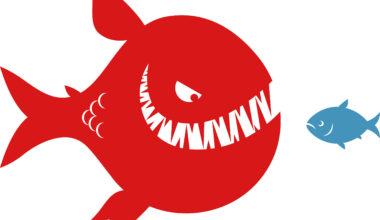“I accept your offer” are magic words to anyone in sales. However, sometimes they are accompanied by a sinking feeling in your stomach. The ‘sinking feeling’ is your intuition telling you that you did not maximize your deal value. Either you came out the gate with an offer price that was too low, or you did not hold your ground well during the negotiation. This article focuses on helping you solve the first problem using an anchor.
An anchor is an opening offer that is on the very high side of the price range for the product you are selling. The key is that the opening offer (or anchor) should be within the realm of possibility, but still high. I generally recommend 20% to 50% more than what you think is a top offer price. To use this tactic, you need to understand what constitutes a high offer price. Before entering a negotiation, spend some time gathering information about what constitutes low, medium, and high offers for the product that you are selling.
Behind the anchoring effect is the science of cognative bias. Studies have shown that buyers subconsciously evaluate all future offers relative to the original anchor, and this cognitive bias has a dramatic effect on the final negotiated price. If one party makes the first offer on the very high side of the price range, they will end up negotiating a better deal than if they had come in closer to the mid-range. You may be thinking, “this is so obvious, I already do this.” Be honest with yourself — are you actually using this tactic? Many negotiators are embarrassed to throw out significant numbers. Numbers that they know are unreasonably high, and instead, they sabotage their deals by opening with mid-range offers. Let’s use selling a used car in a private sale as an example:
In a used car sales, the owner of the vehicle wants the highest possible price; the buyer wants the lowest possible price. Imagine that the car is a 2014 BMW with 35,000 miles, and its estimated value (based on an online quote engine) is $16,000 trade-in (at a dealership) and $20,000 for a private sale. As the seller, it is often tempting to throw out a reasonable value (let’s say $18,500) as your opening offer to try to win the sale without friction. We know better, and so we are going to use an anchor price of $24,000, or 20% over the estimated private party value ($20,000 * 1.2 = $24,000). $24,000 is an aggressive opening offer, but it’s not completely ‘off the charts crazy.’
After the negotiation, you ended up with a final sale price of $18,000, a bit below the $20,000 estimated private party value. Still, you were happy to sell the car. The buyer perceived $18,000 as a good deal relative to the anchor price of $24,000. If you had started at $18,500 and followed your “gut,” you likely would have ended up around $16,500. Don’t be afraid to drop anchors and win more high-value deals!
You can read more about the anchoring effect at the Harvard Business Review.


